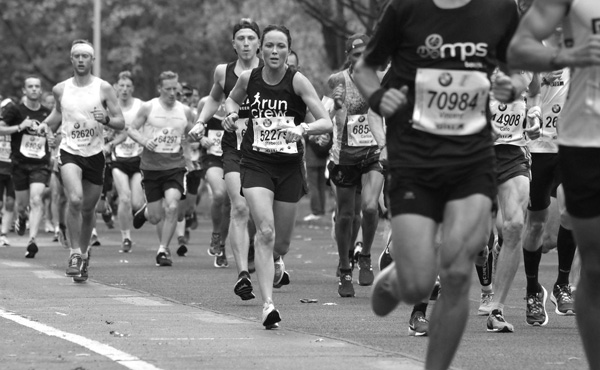28 runners collapsed during a nighttime marathon due to extreme heat and tropical nights

[Marathon. Photo Credit: Pixabay]
The recent nighttime marathon, where 28 participants collapsed due to extreme heat, serves as a stark reminder of the growing dangers athletes face in increasingly harsh conditions.
This event highlights the broader challenges sports encounter in a world where rising temperatures and unpredictable weather patterns are becoming the norm.
Earlier this year, the Ironman World Championship, held in Nice, France, faced unprecedented challenges due to extreme heat.
With temperatures soaring to 38°C (100°F), numerous participants struggled with heat-related illnesses despite the organizers' efforts to mitigate the effects.
The situation was so severe that medical teams were overwhelmed, and many competitors had to abandon the race.
The Ironman incident reflects a broader trend: endurance events, which traditionally push athletes to their physical limits, are becoming even more dangerous due to climate change.
However, the challenges posed by extreme heat are not limited to endurance sports.
In sports like tennis, where matches can last several hours, the impact of heat is particularly pronounced.
During the recent 2024 Australian Open, extreme heat again played a significant role.
Temperatures soared above 42°C, leading to several match delays and causing players to suffer from heat exhaustion.
Despite implementing the tournament’s Heat Stress Scale protocol, which allows for breaks and adjustments based on temperature and humidity, the extreme conditions took a toll on the athletes.
This situation raised questions about the adequacy of current protocols and whether more stringent measures are needed to protect players in the future.
The sports industry faces a daunting challenge as climate change drives more frequent and intense heat waves.
Traditional methods of scheduling events and protecting athletes are becoming increasingly inadequate.
In response, sports organizations are being forced to rethink their approaches.
For example, the Paris Olympics organizers have introduced flexible scheduling for some events, such as the marathon and triathlon, allowing them to be moved to cooler parts of the day if necessary.
However, experts warn that these measures are only stopgap solutions and do not fully address the long-term implications of climate change on sports.
In addition to immediate safety measures, there is growing recognition that the sports industry must engage in broader efforts to combat climate change, including reducing the carbon footprint of events and advocating for policies to address global warming.
With its global influence, the sports sector can significantly raise awareness and drive action on climate issues.
Without substantial changes, the future of outdoor summer sports is at serious risk.
Adaptation may involve shifting event timings, investing in climate-controlled venues, and developing technologies to monitor and manage athletes' health.
However, practices like relying on artificial snow are neither environmentally nor economically sustainable, underscoring the urgency of addressing climate change directly.
The recent sports events highlight the increasingly risky intersection of sports and climate change.
As global temperatures continue to rise, atheletes and organizers face mounting challenges.
The sports industry must not only adapt to these new realities but also actively work to address the factors driving climate change.
Without such efforts, the future of outdoor sports could be in jeopardy, with the health and safety of athletes at greater risk than ever before.

- Aiden Been Jo / Grade 10
- Ssangyong High School

![THE HERALD STUDENT REPORTERS [US]](/assets/images/logo_student_us.png)
![THE HERALD STUDENT REPORTERS [Canada]](/assets/images/logo_student_ca.png)
